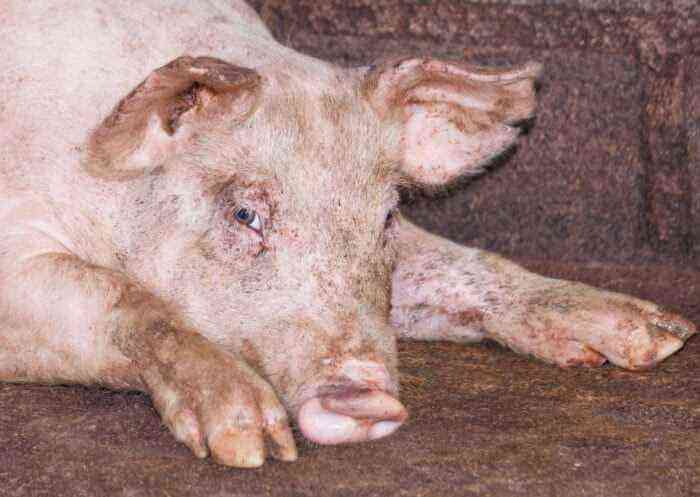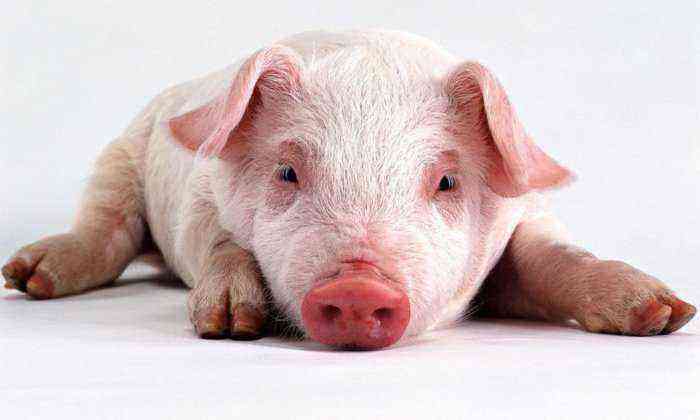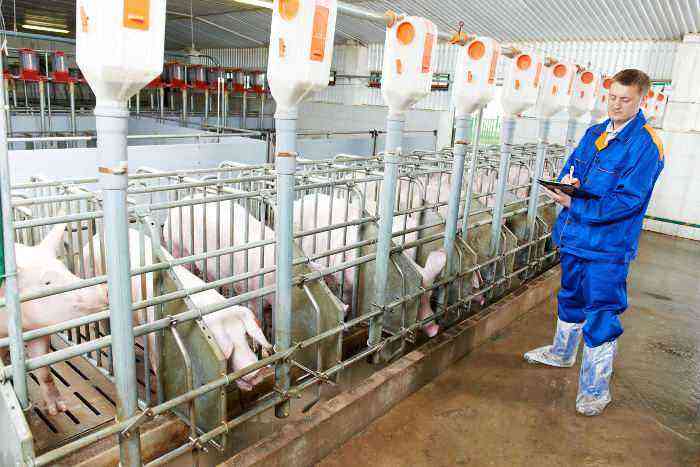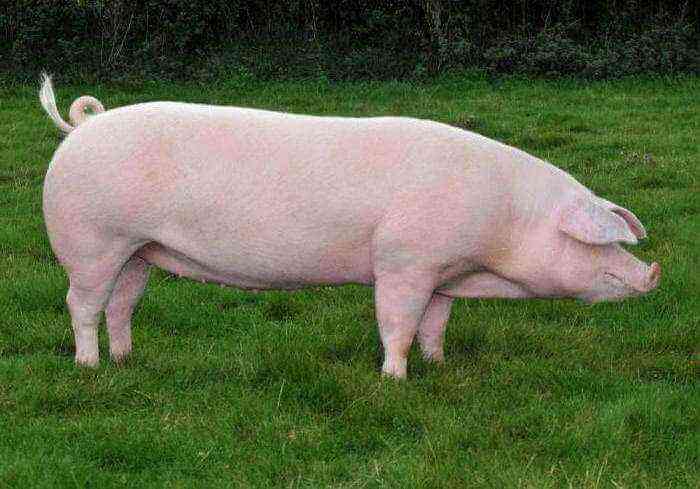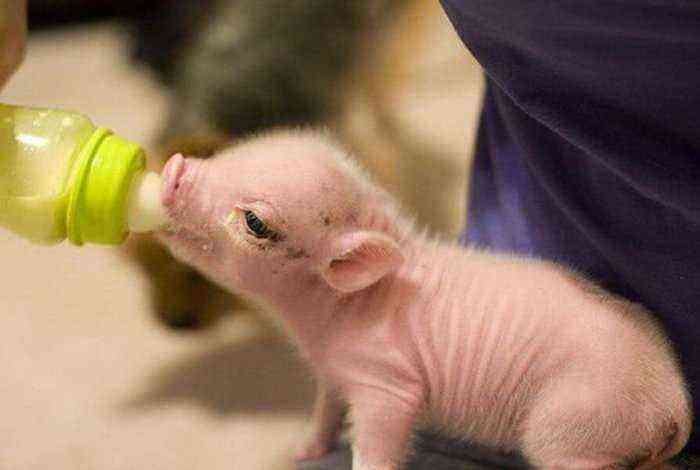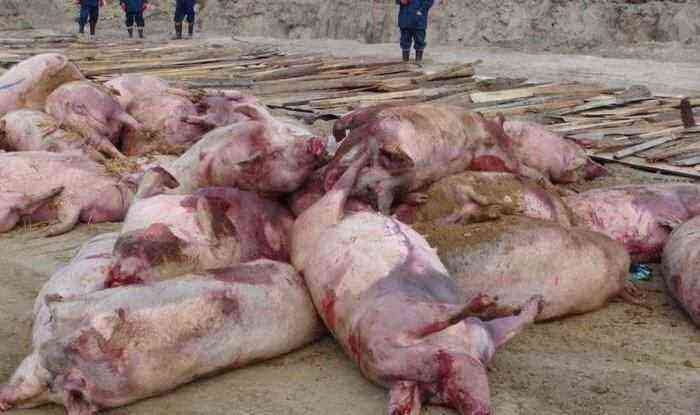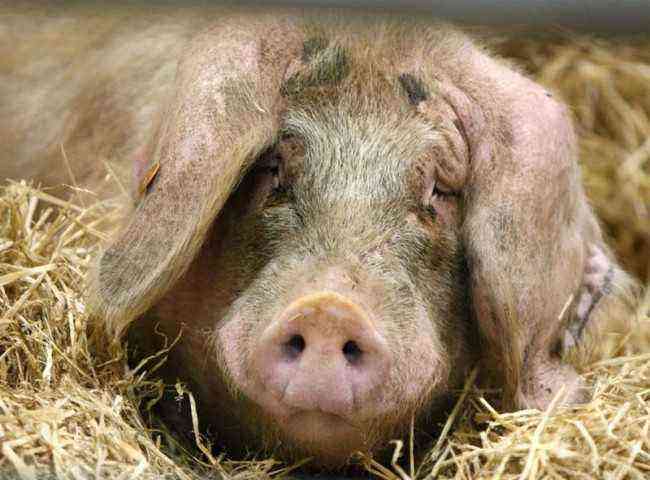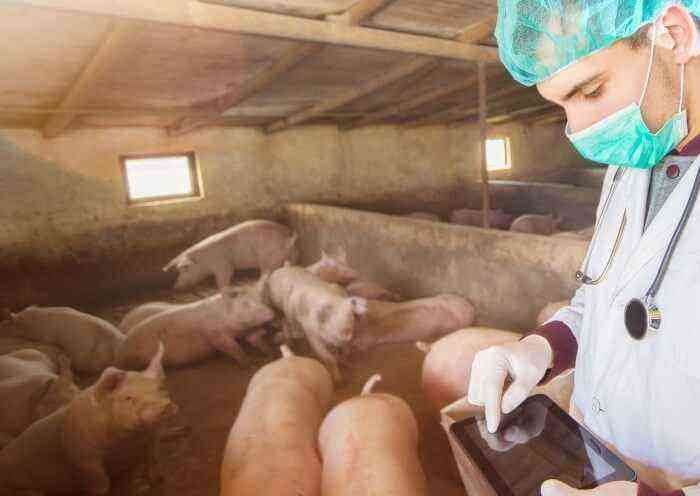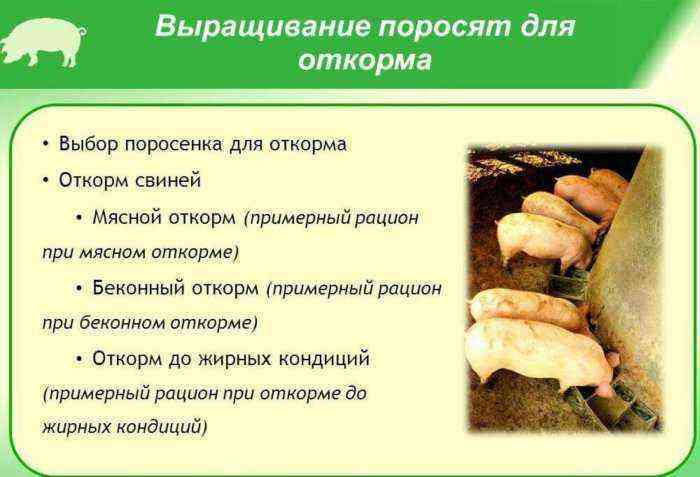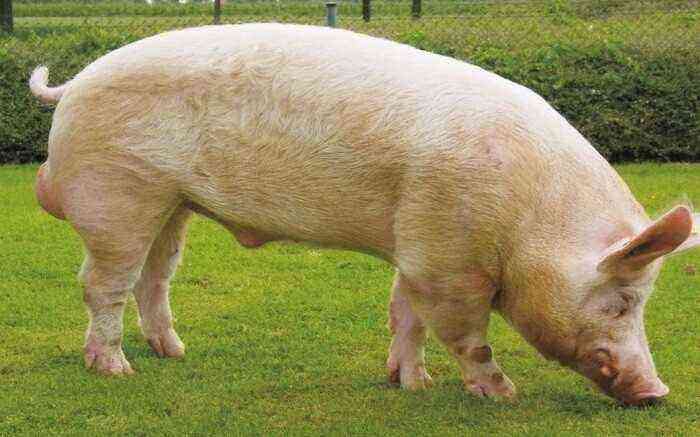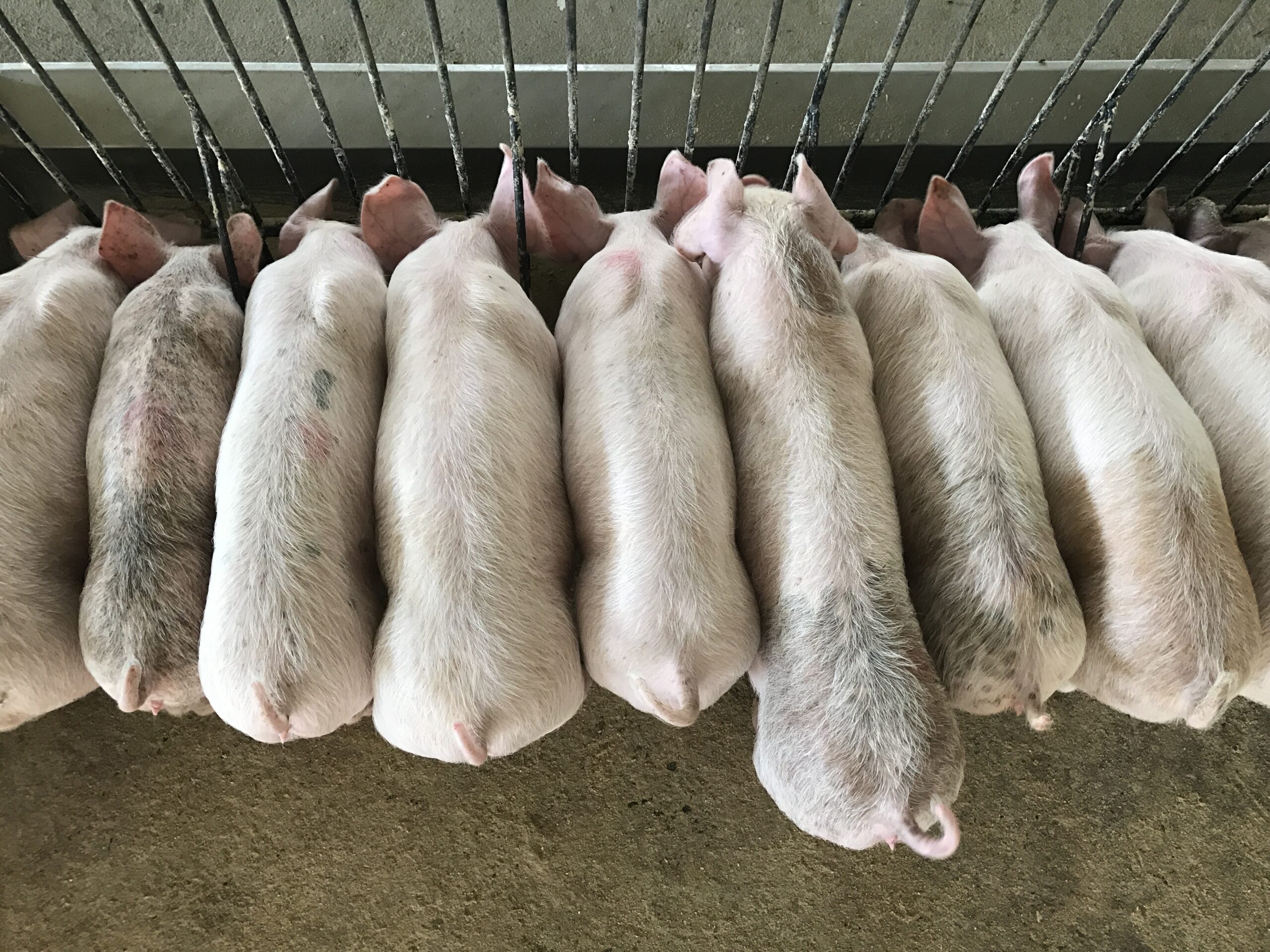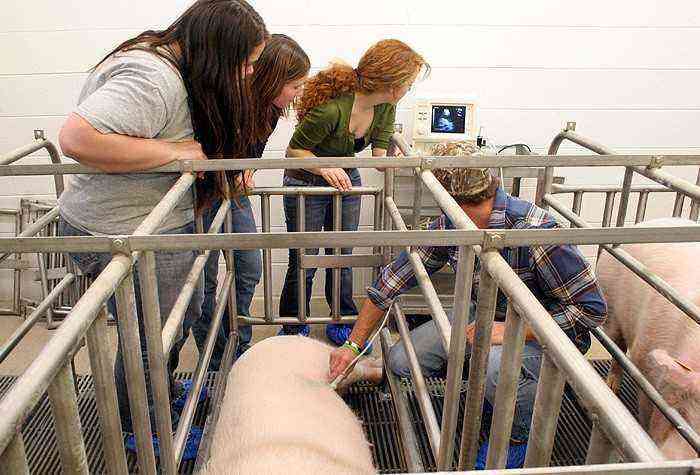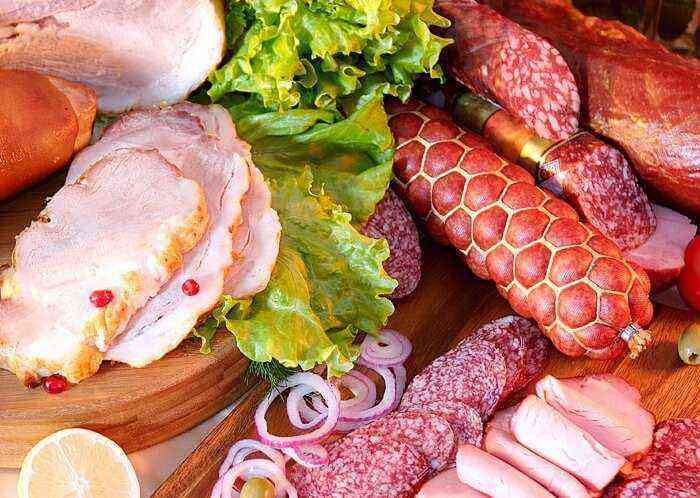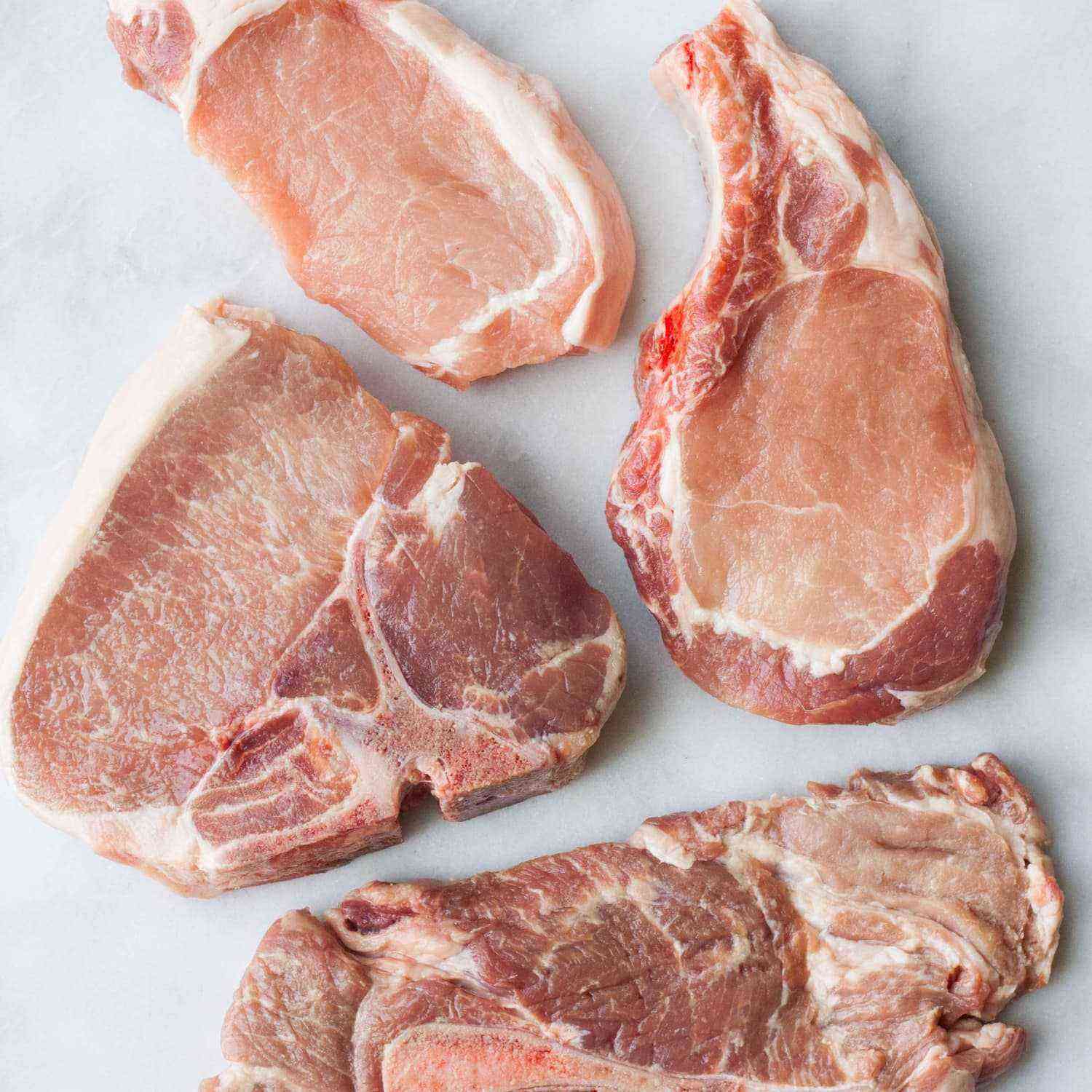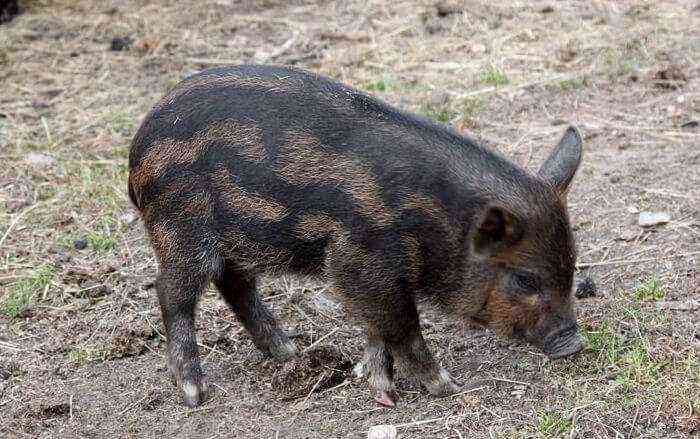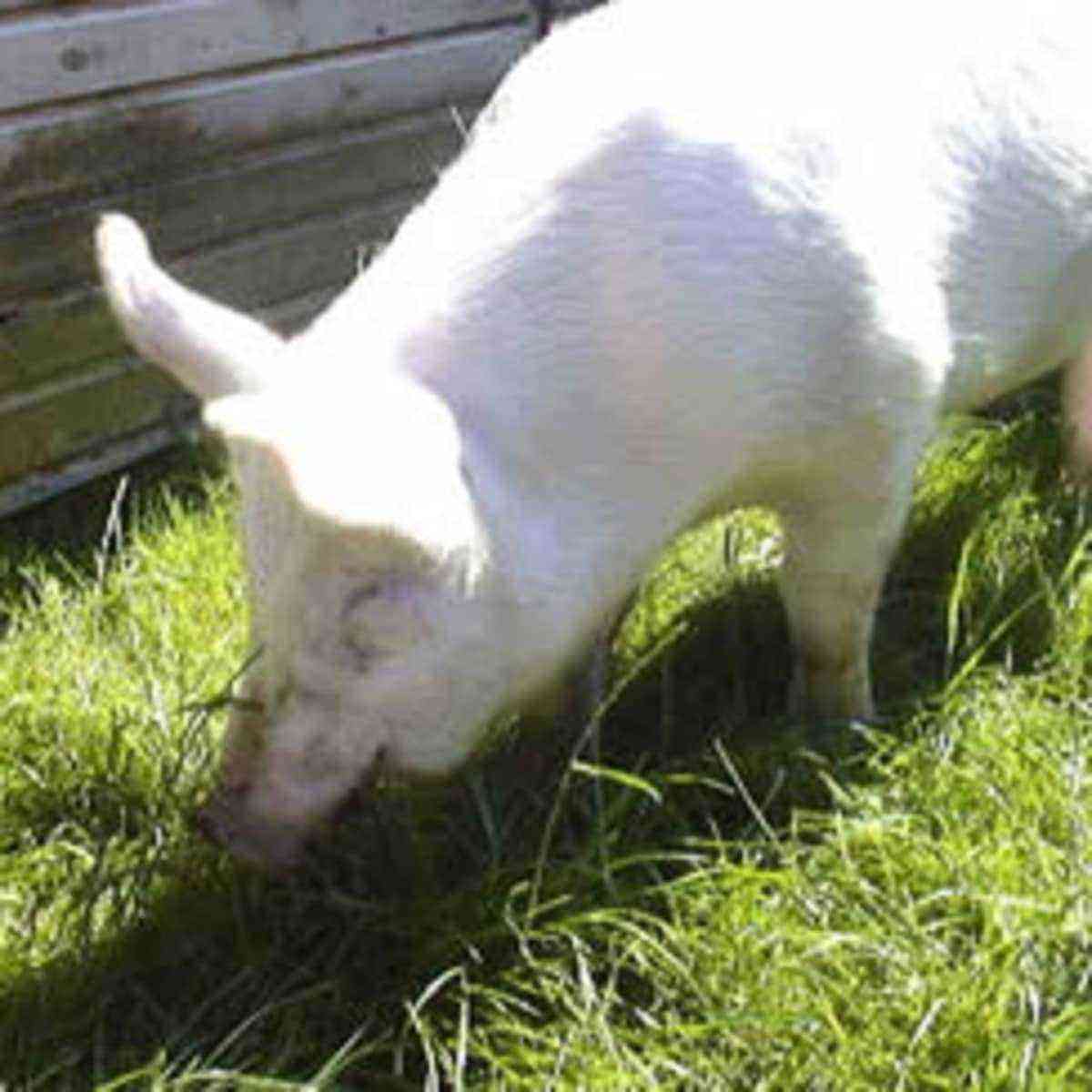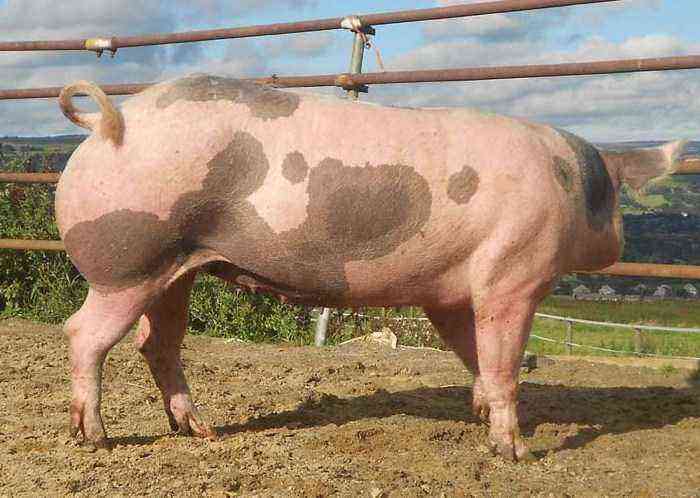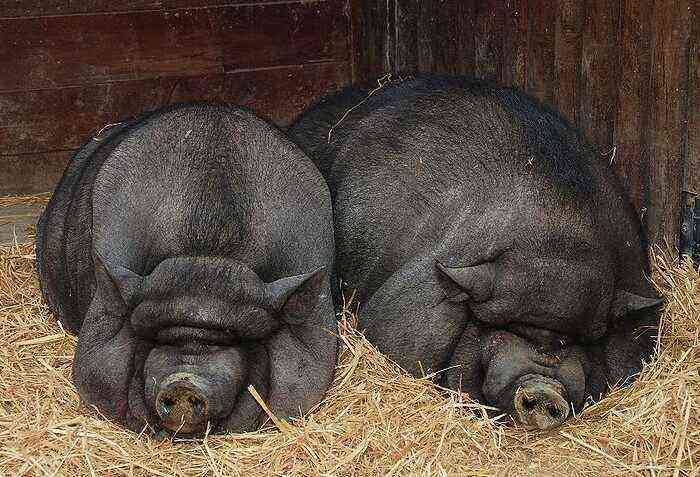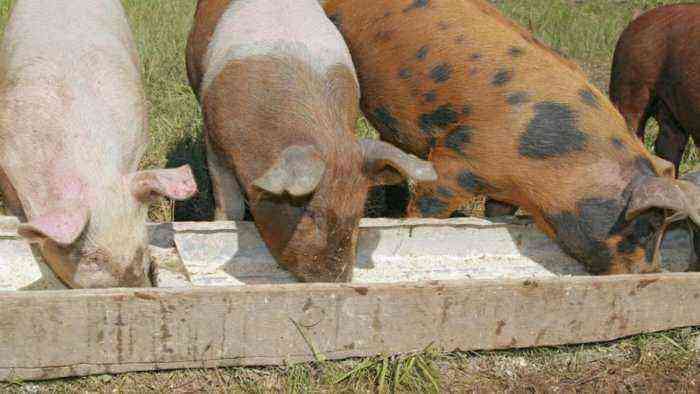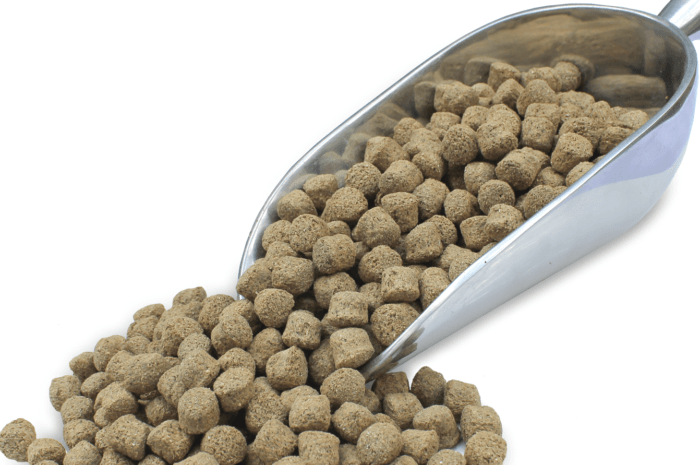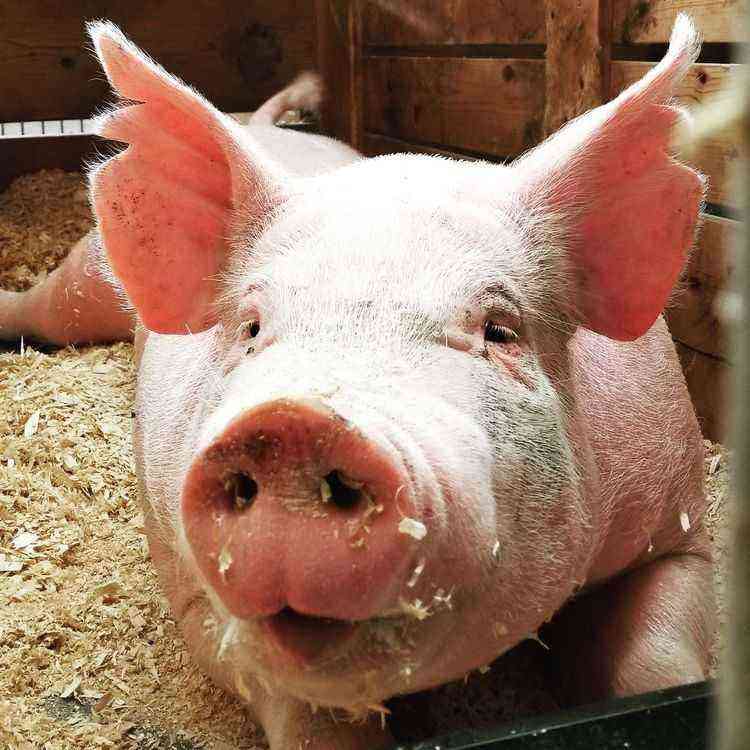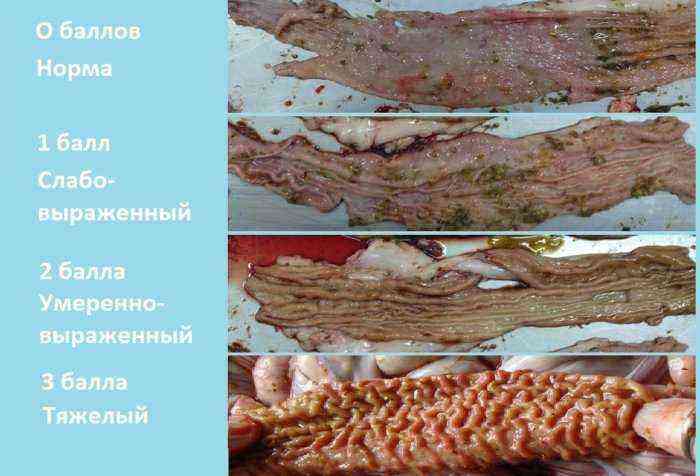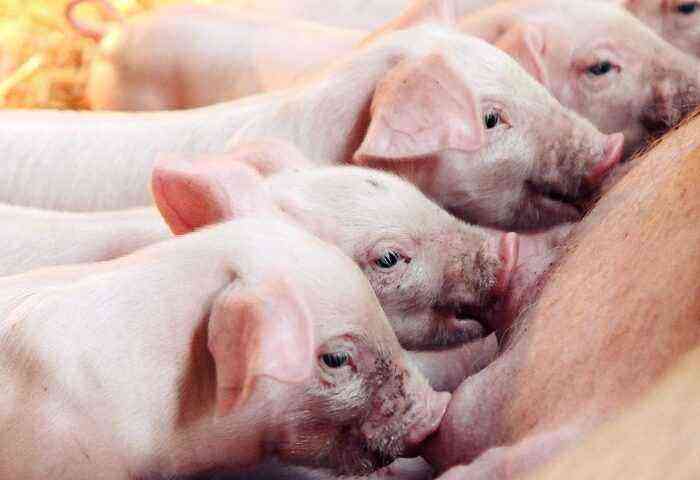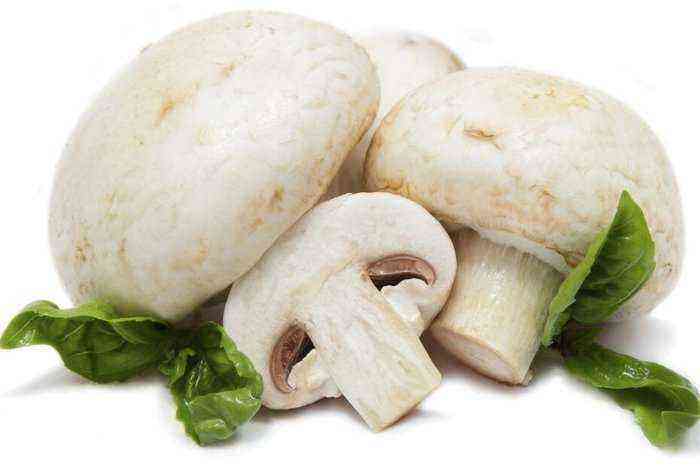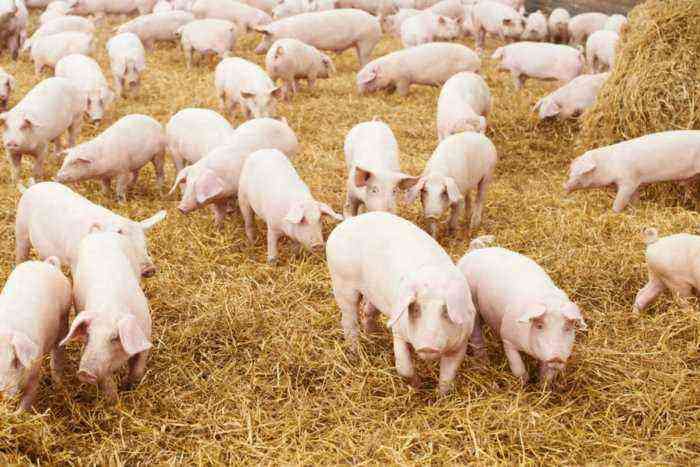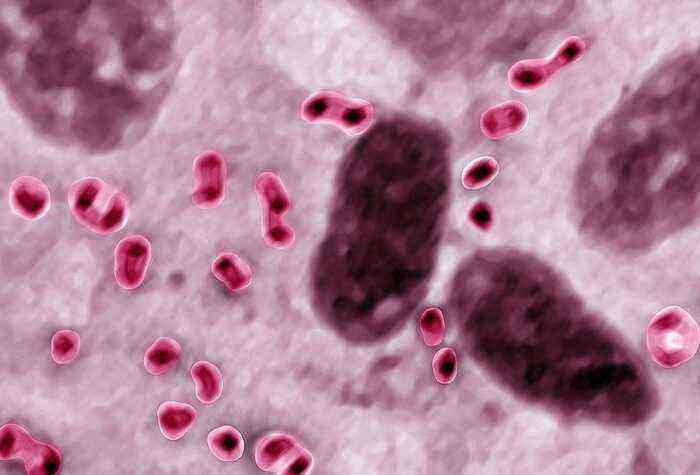Pig feed is a balanced product that provides animals with the necessary nutrients. Its components and their percentages differ, depending on the producer and the age of the pigs for which it is intended. Despite the high cost of compound feeds, their use pays off with rapid weight gain, correct and harmonious development of animals.
Pig nutrition
Types of compound feed
Ready feed is divided into types, depending on the composition of the top dressing:
- protein, which are based on legumes, meal and flour products;
- energy, developed on the basis of grain crops;
- coarse, consisting of bran, vegetable crops, dried grass, food waste;
- protein feed from waste, based on by-products of meat and dairy production.
Depending on the consistency and method of production, feed is divided into the following types:
- Dry feed. For normal digestion requires plenty of fluids. The advantages include low weight, thanks to which it is convenient to transport and store.
- Liquid feed. It is a complete diet. Disadvantages – the inconvenience of storage and delivery, with long-term use in animals, there is a violation of the function of salivation.
- Wet food. Optimal consistency composition, which is characterized by improved digestibility. As a rule, it has a balanced composition and is used as a diet base.
- Granulated food. One of the varieties of dry food. Convenient for storage and transportation.
- concentrated feed. A special food mixture that includes protein, selected vitamin complexes, minerals. The use of such feed allows you to provide animals with a complete diet, which makes this product the most popular among breeders.
Composition
The composition of compound feed for pigs is normalized by state standards. For this, several important characteristics are used:
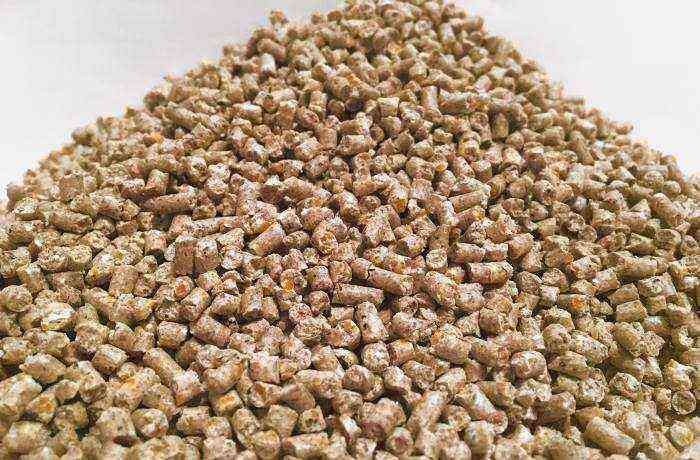
Compound feed for pigs
- nutritional value;
- mineral composition;
- grind size;
- granule size.
Reference. The most popular is the PK-57-3-89 compound feed recipe, which is developed on the basis of barley, oats, meat and bone and alfalfa meal, and also includes sunflower meal, table salt and fodder chalk (see table).
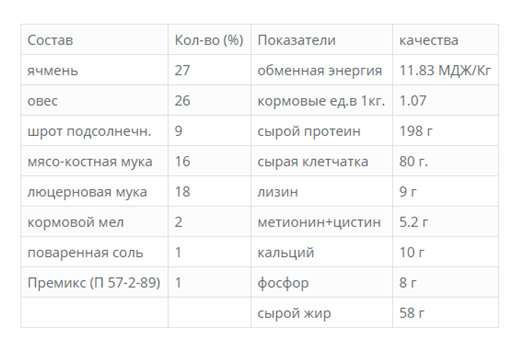
Table with ingredients for the preparation of compound feed PK-57-3-89
The quality characteristics of compound feed should remain unchanged, regardless of its composition. It must have a high nutritional value. According to the requirements of GOST, combined products for pig breeding must contain from 6 to 12 components. Manufacturers can add ready-made mineral supplements and vitamins to the mixture. Also, compound feed can be made cheaper by replacing expensive components with less expensive analogues.
Which one is better to choose?
When choosing compound feed, it is necessary to focus on the age of the animal and its purpose. According to these indicators, they are divided into 6 types:
- for newborn piglets;
- for young animals up to 45 days old;
- for young individuals under the age of 8 months;
- for fattening pigs for slaughter;
- for feeding boars;
- for sows.
When buying industrial feed, you need to know exactly the composition of the mixture, its purpose, and the rules of feeding. The composition must have a balanced complex of vitamins and minerals. Cereal crops should make up more than 50% of the compound feed composition. Legumes also account for a large share. Meal occupies no more than 10% of the volume in the compound feed structure.
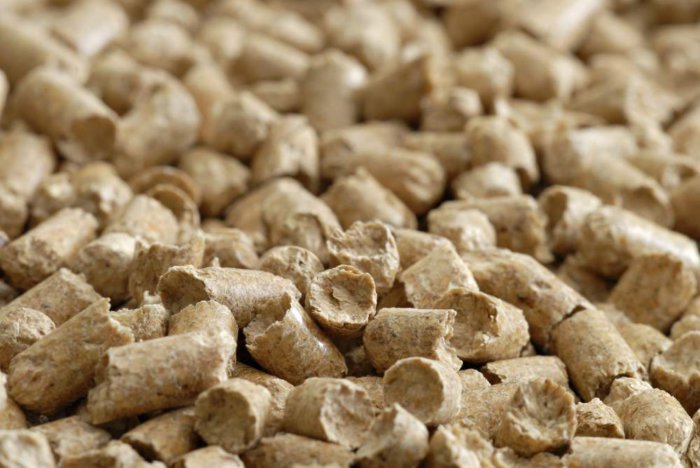
Schroth
DIY recipes
One of the best options is to make your own combined product for feeding pigs. In this case, the breeder can be sure of the quality of the feed, can easily vary the dosage, in accordance with the age of the pigs and the purpose of fattening.
The technology of feed preparation provides for a thorough preparation of cereals: they are washed, dried and crushed using a grain mill. After mixing the grain with the rest of the elements, the feed is diluted with water until a thick consistency is obtained (the mixture should resemble dough). Then it is passed through a meat grinder to obtain a granular product. After drying, the feed is ready for feeding animals.
For piglets
The composition of compound feed for piglets up to 1,5 months of age includes the following ingredients:
- barley flour – 47%;
- dry milk – 21%;
- flour from legumes – 15,3%;
- fishmeal – 4%;
- animal fat – 3,5%;
- additive Premix – 3,78%;
- sucrose – 2,4%;
- yeast for feeding animals – 1,5%;
- calcium carbonate – 0,5%.
Reference. Compound feed for piglets should have the most uniform consistency. Carefully crushed food is steamed with boiling water to increase absorption.
For older piglets up to 60 days old, the proportion of milk powder is reduced to 9,3%, and bran and corn flour are also added to the compound feed by reducing the proportion of barley and bean flour. The volume of the vitamin supplement Premix can be reduced to 2,57%.

Premix
For adult pigs
The optimal recipe for compound feed for adults for self-preparation:
- oats – 28%;
- barley – 27%;
- alfalfa flour – 18%;
- BMK – 16%;
- sunflower meal – 9%;
- chalk additive – 2%;
- food salt – 1%;
- Premix additive – 1%.
Self-preparation of combined feed is rational if you have access to the feed base. The use of grass, vegetables, grain of our own production increases the environmental friendliness of feeding and guarantees the high quality of the feed mixture.
Daily consumption rate
Ready mixed feeds constitute the basic diet of animals. For adult pigs that are fattened for slaughter, the daily intake is about 3 kg. A sow consumes a similar amount of compound feed per day. During lactation, a pig needs an increase in food volume up to 3,6 kg.
Daily recommended consumption rates for different types of feed, depending on age, are shown in the table.

Daily consumption rates of various types of feed by age of pigs
Annual feed rate
Each breeder must form feed stocks to avoid interruptions in the supply of food to animals. Also, planning the purchase of feed allows you to estimate the cost of growing. The annual amount of compound feed depends on the age of the animal:
- young animals up to 1,5 months old – 10,5 kg;
- young animals up to 60 days old – 23,5 kg;
- young animals up to 3 months old – 54 kg;
- pigs aged 3 to 4 months – 70 kg;
- pigs aged 4 to 5 months – 56 kg;
- pigs, under the age of 6 months – 64 kg.
To feed a pig for slaughter to the age of 6 months, 334 kg of compound feed will be required. This volume is approximate and depends on the breed of the pig and the rate of weight gain. Many breeders reduce the cost of feeding by preparing feed with their own hands. This makes it easy to adapt feed for feeding animals, depending on their characteristics and age.
